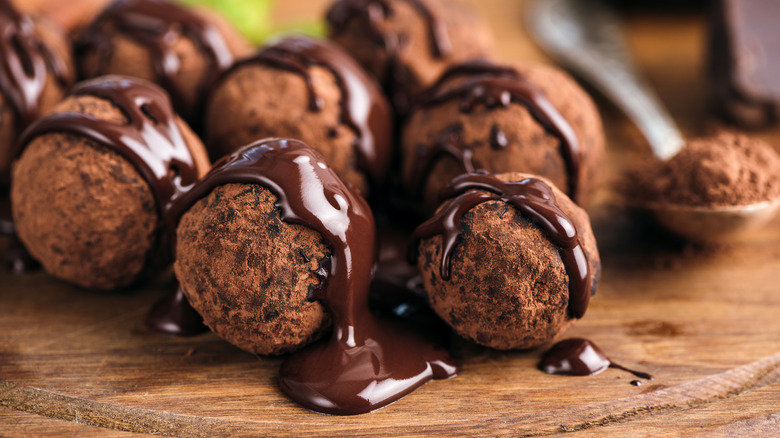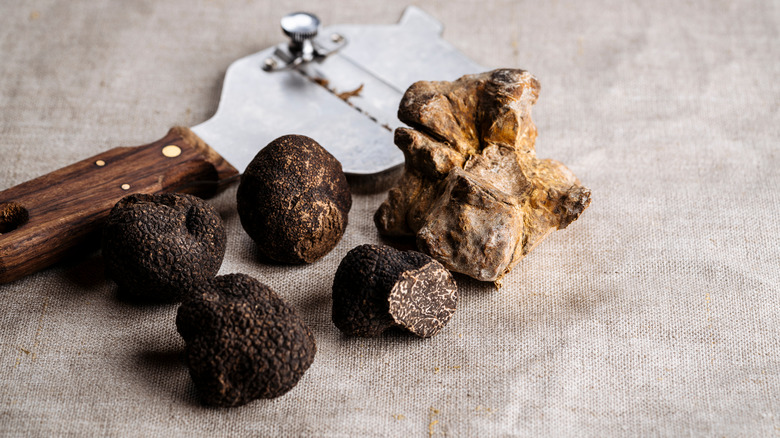The Real Reason Desserts Are Called Truffles
Pop quiz: When a famous 19th-century British novelist wrote, "Presently, we were aware ... the truffles were coming," was he referring to chocolate or mushrooms? Here's a hint: At that time, chocolate truffles hadn't yet been invented. However, that was about to change, thanks to a French maître pâtissier (master pastry chef) who was tired of his tried-and-true confections for that year's holiday season and decided to try something new to impress his bakery's customers.
In 1895, Louis Dufour's innovative move to whisk chocolate with cream, roll it into a ball, cool, then cover it in melted chocolate and powder it with cocoa made customers swoon, explains the Chocolate Museum & Cafe. Because the concoction looked like a blob of coal, he named it after another delicacy that looked the same: the actual truffle, a lump of mushroom-esque fungus so aromatic that writers of the day waxed poetic about it.
Unfortunately for Dufour, though, another French chef had the same idea a few decades later after his assistant mistakenly poured hot cream over chocolate chunks. The chef, Auguste Escoffier, called his assistant a ganache (French for empty-headed fool). As fate would have it, Escoffier fell in love with the mixture's ability to pour a smooth sweet layer of chocolate over a chocolate ball such that it resembled an actual truffle. And just like that, the two stories became rivaling origin legends of the chocolate truffle.
Chocolate truffles vs. regular truffles
Unlike its underground grown namesake, which is expensive, hard to grow, and overall temperamental, a chocolate truffle made at home is easy as can be. There are lots of chocolate truffle recipes to try — and a few common mistakes to avoid. According to Taste of Home, home chefs should start with good ingredients and stick with good methods, including sufficient chocolate chopping and using the right ratio of chocolate and cream. Also, be sure to let your ganache cool sufficiently, at least until it's solid enough to scoop into balls that stay intact.
Sourcing an actual truffle is much harder and expensive, ranging from $45 per ounce for Oregon truffles to a whopping $61,000 for a Sotheby's Italian truffle, according to Rarest.org. Though it grows underground near tree roots, the truffle is not a root but a fungus, and it's rich in nutrients like fiber, vitamin C, and iron.
Unlike the chocolate truffle, the actual truffle's claim to fame leans as much on its aroma as its taste. It has been made into a variety of truffle oils, ostensibly for at home and restaurant chefs to add a little truffle to their menus without breaking the bank. Just keep in mind that oils are often infused with a flavor compound of truffles, not truffles themselves, per The New York Times.

